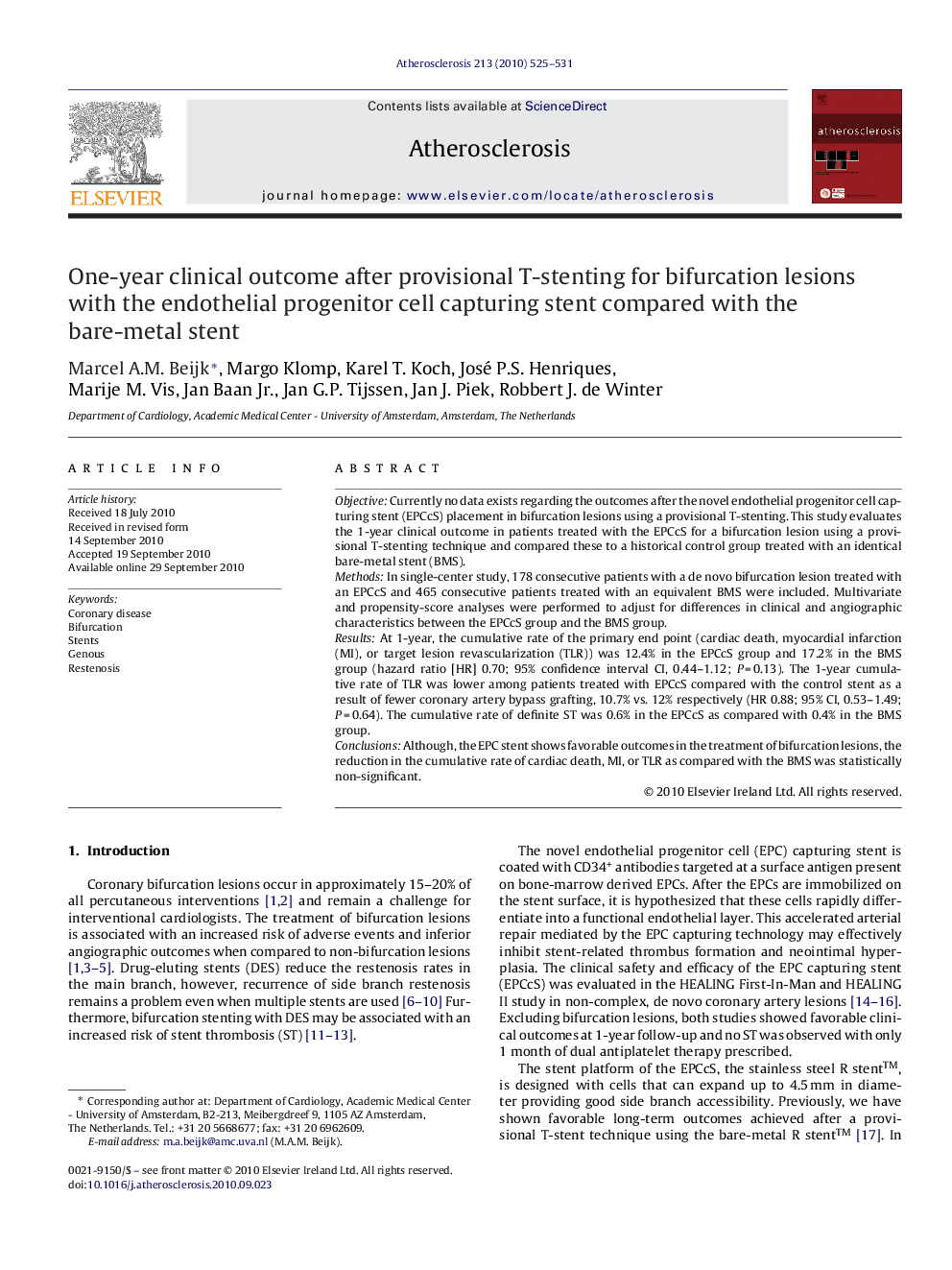| Article ID | Journal | Published Year | Pages | File Type |
|---|---|---|---|---|
| 2892951 | Atherosclerosis | 2010 | 7 Pages |
ObjectiveCurrently no data exists regarding the outcomes after the novel endothelial progenitor cell capturing stent (EPCcS) placement in bifurcation lesions using a provisional T-stenting. This study evaluates the 1-year clinical outcome in patients treated with the EPCcS for a bifurcation lesion using a provisional T-stenting technique and compared these to a historical control group treated with an identical bare-metal stent (BMS).MethodsIn single-center study, 178 consecutive patients with a de novo bifurcation lesion treated with an EPCcS and 465 consecutive patients treated with an equivalent BMS were included. Multivariate and propensity-score analyses were performed to adjust for differences in clinical and angiographic characteristics between the EPCcS group and the BMS group.ResultsAt 1-year, the cumulative rate of the primary end point (cardiac death, myocardial infarction (MI), or target lesion revascularization (TLR)) was 12.4% in the EPCcS group and 17.2% in the BMS group (hazard ratio [HR] 0.70; 95% confidence interval CI, 0.44–1.12; P = 0.13). The 1-year cumulative rate of TLR was lower among patients treated with EPCcS compared with the control stent as a result of fewer coronary artery bypass grafting, 10.7% vs. 12% respectively (HR 0.88; 95% CI, 0.53–1.49; P = 0.64). The cumulative rate of definite ST was 0.6% in the EPCcS as compared with 0.4% in the BMS group.ConclusionsAlthough, the EPC stent shows favorable outcomes in the treatment of bifurcation lesions, the reduction in the cumulative rate of cardiac death, MI, or TLR as compared with the BMS was statistically non-significant.
